
Workers check the quality of new energy vehicles at a smart factory of Chinese vehicle manufacturer Seres Group in Liangjiang New Area, southwest China's Chongqing Municipality, April 25, 2024. With a burgeoning demand for clean energy solutions to combat climate change, the global landscape indicates a pressing need for expanded production capabilities rather than an excess.
According to projections by the International Energy Agency, the demand for new energy vehicles is anticipated to skyrocket, reaching 45 million by 2030, 4.5 times that of 2022. (Xinhua/Huang Wei)
BEIJING, April 25 (Xinhua) -- In the ongoing discourse surrounding the global new energy sector, the U.S. allegations of "overcapacity" in China starkly contradict the prevailing reality of significant undercapacity in the industry.
With a burgeoning demand for clean energy solutions to combat climate change, the global landscape indicates a pressing need for expanded production capabilities rather than an excess.
The characterization of overcapacity appears peculiar when people consider the innovative and tech-driven nature of the new energy industry, which embodies the growing trend of energy transition. This sector remains in its nascent stages of rapid growth, with the demand for new energy products outstripping current global capacity.
According to projections by the International Energy Agency, the demand for new energy vehicles is anticipated to skyrocket, reaching 45 million by 2030, 4.5 times that of 2022. Similar exponential growth is expected in global demand for new photovoltaic installations. Aligning with these projections, the consensus reached at the 28th session of the Conference of the Parties to the UN Framework Convention on Climate Change also underscores the urgent need to triple renewable energy capacity by 2030.
Of particular note is the Sunnylands Statement on Enhancing Cooperation to Address the Climate Crisis, wherein China and the United States have reaffirmed their commitment to collaborative efforts in tackling climate change, including the support for tripling renewable energy capacity globally by 2030.
Despite claims of overcapacity, there remains a consistent global demand for Chinese new energy products like vehicles and batteries, evidenced by many countries seeking investments from Chinese enterprises in this sector. Moreover, the significant policy backing from the United States, particularly through initiatives like the Inflation Reduction Act, further emphasizes this disparity.
The escalating demand for new energy globally necessitates sustained efforts to expand production capacity, with China's robust development of the new energy industry playing a pivotal role in this endeavor. China's swift advancement in new energy technology, combined with its commitment to product quality, has earned growing recognition both at home and abroad.
The resilience and competitiveness of China's new energy products stem from various factors, including early investment in research and development, a comprehensive industrial chain, a vast domestic market, rapidly evolving infrastructure, and robust market competition encompassing state-owned, private and foreign entities.
Allegations of overcapacity in China's new energy industry seem driven by protectionist motives. Rather than reducing China's capacity, the global community should strive for expanded investment and access to Chinese products to accelerate the energy transition. ■
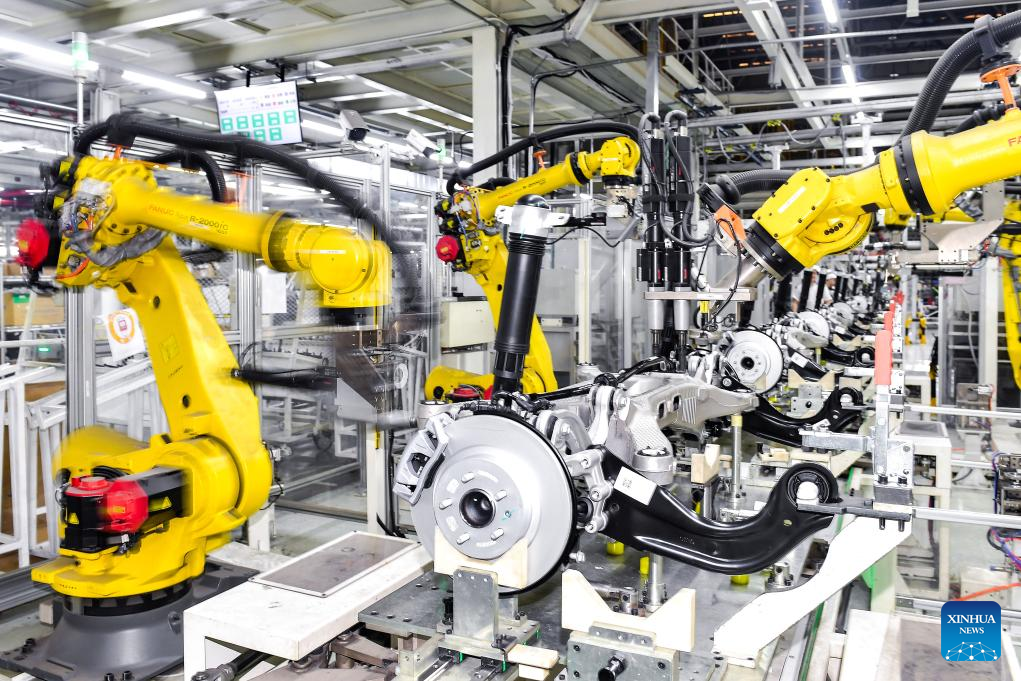
Robots work at an assembly line of FAW-Hongqi in Changchun, northeast China's Jilin Province, April 24, 2024. With a burgeoning demand for clean energy solutions to combat climate change, the global landscape indicates a pressing need for expanded production capabilities rather than an excess.
According to projections by the International Energy Agency, the demand for new energy vehicles is anticipated to skyrocket, reaching 45 million by 2030, 4.5 times that of 2022. (Xinhua/Xu Chang)
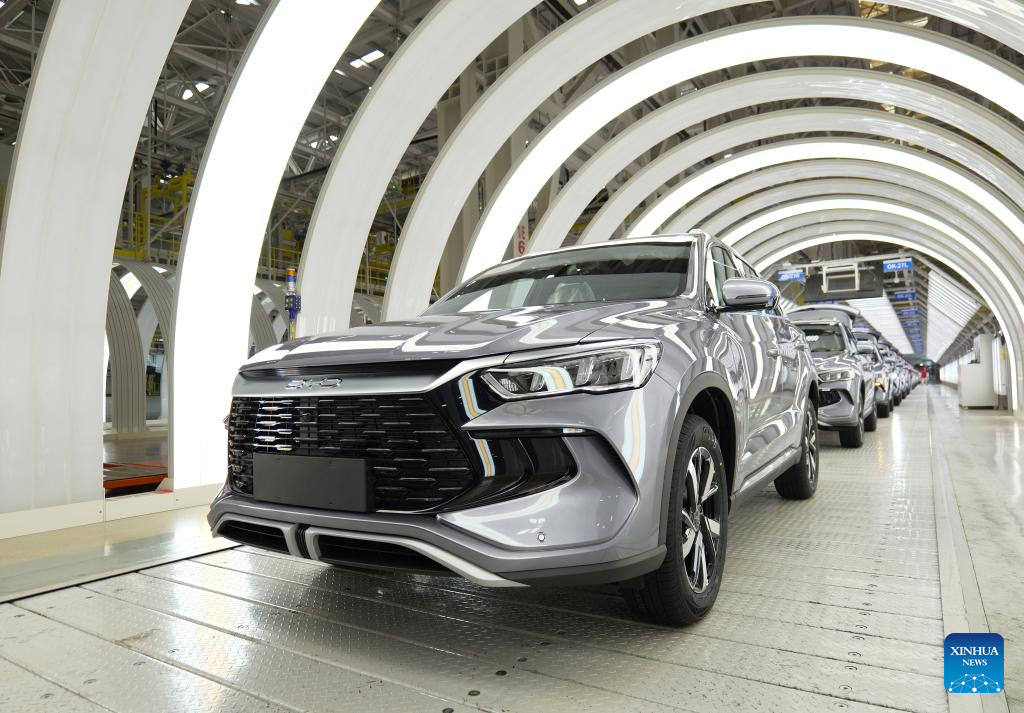
This photo taken on April 24, 2024 shows a new energy vehicle (NEV) assembly line of BYD, China's leading NEV manufacturer, at the plant of BYD in Zhengzhou, central China's Henan Province. With a burgeoning demand for clean energy solutions to combat climate change, the global landscape indicates a pressing need for expanded production capabilities rather than an excess.
According to projections by the International Energy Agency, the demand for new energy vehicles is anticipated to skyrocket, reaching 45 million by 2030, 4.5 times that of 2022. (Xinhua/Li Jianan)

Workers work at an assembly line of Chinese vehicle manufacturer Seres Group in Liangjiang New Area, southwest China's Chongqing Municipality, April 25, 2024. With a burgeoning demand for clean energy solutions to combat climate change, the global landscape indicates a pressing need for expanded production capabilities rather than an excess.
According to projections by the International Energy Agency, the demand for new energy vehicles is anticipated to skyrocket, reaching 45 million by 2030, 4.5 times that of 2022. (Xinhua/Huang Wei)

A drone photo taken on Feb. 26, 2024 shows the welding workshop of Chinese vehicle manufacturer Seres Group in Liangjiang New Area, southwest China's Chongqing Municipality. With a burgeoning demand for clean energy solutions to combat climate change, the global landscape indicates a pressing need for expanded production capabilities rather than an excess.
According to projections by the International Energy Agency, the demand for new energy vehicles is anticipated to skyrocket, reaching 45 million by 2030, 4.5 times that of 2022. (Photo by Gao Zhang/Xinhua)

Robots work at an assembly line of FAW-Hongqi in Changchun, northeast China's Jilin Province, April 24, 2024. With a burgeoning demand for clean energy solutions to combat climate change, the global landscape indicates a pressing need for expanded production capabilities rather than an excess.
According to projections by the International Energy Agency, the demand for new energy vehicles is anticipated to skyrocket, reaching 45 million by 2030, 4.5 times that of 2022. (Xinhua/Xu Chang)
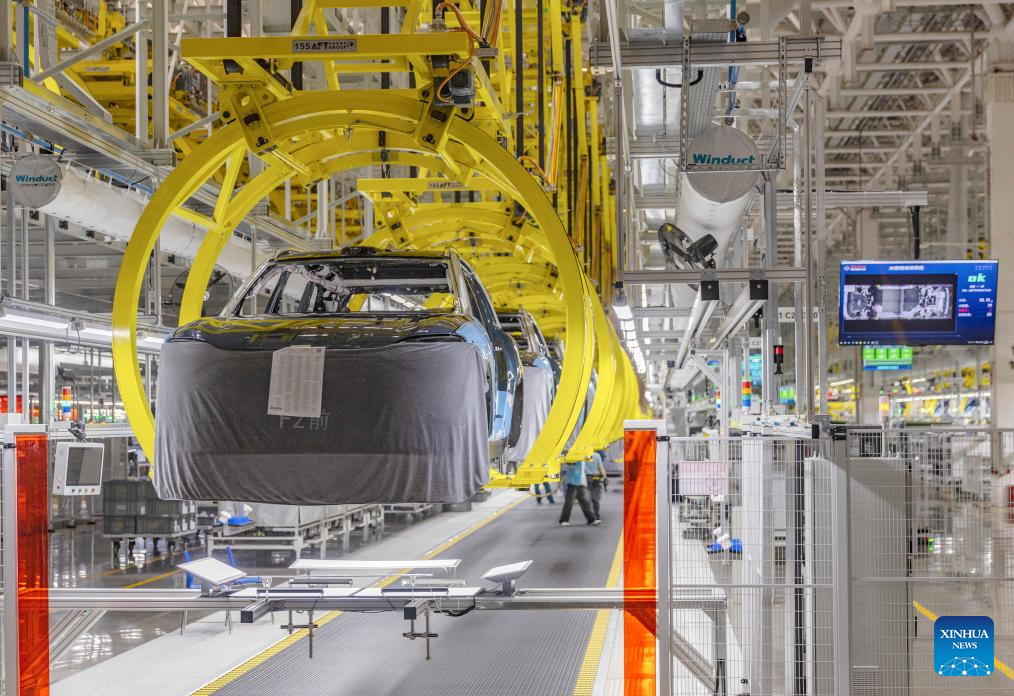
Vehicles are under examination at a smart factory of Seres Group in Liangjiang New Area, southwest China's Chongqing Municipality, April 25, 2024. With a burgeoning demand for clean energy solutions to combat climate change, the global landscape indicates a pressing need for expanded production capabilities rather than an excess.
According to projections by the International Energy Agency, the demand for new energy vehicles is anticipated to skyrocket, reaching 45 million by 2030, 4.5 times that of 2022. (Xinhua/Huang Wei)

Robots work at the assembly workshop of Chinese vehicle manufacturer Seres Group in Liangjiang New Area, southwest China's Chongqing Municipality, April 25, 2024. With a burgeoning demand for clean energy solutions to combat climate change, the global landscape indicates a pressing need for expanded production capabilities rather than an excess.
According to projections by the International Energy Agency, the demand for new energy vehicles is anticipated to skyrocket, reaching 45 million by 2030, 4.5 times that of 2022. (Xinhua/Huang Wei)
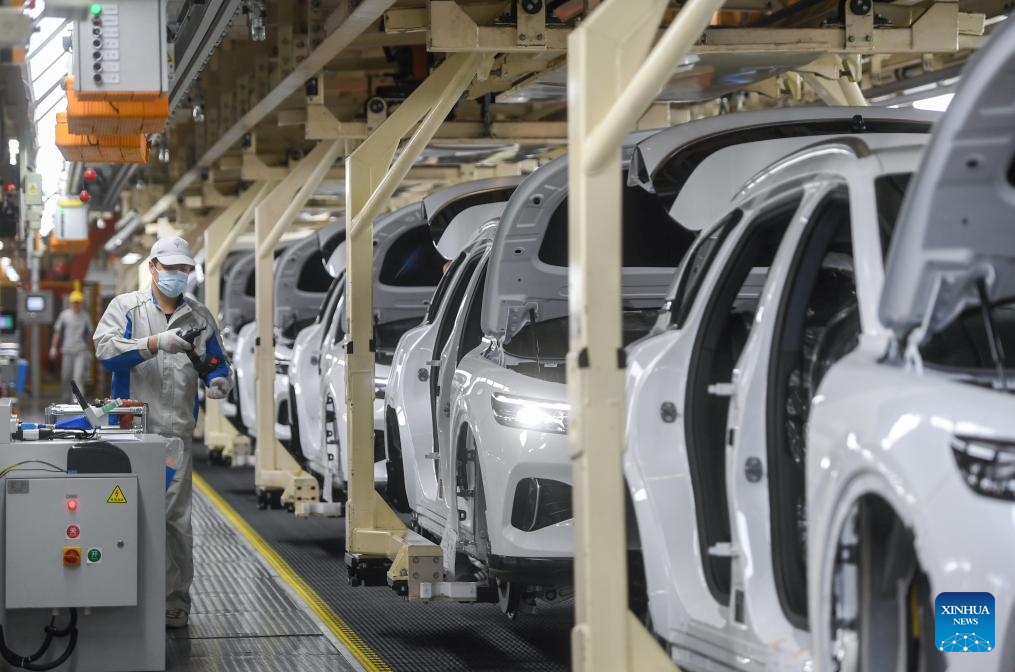
A worker works at an assembly line of Voyah, a Chinese electric auto brand, in Wuhan, central China's Hubei Province, April 24, 2024. With a burgeoning demand for clean energy solutions to combat climate change, the global landscape indicates a pressing need for expanded production capabilities rather than an excess.
According to projections by the International Energy Agency, the demand for new energy vehicles is anticipated to skyrocket, reaching 45 million by 2030, 4.5 times that of 2022. (Xinhua/Du Zixuan)

Robots work at the assembly workshop of Chinese vehicle manufacturer Seres Group in Liangjiang New Area, southwest China's Chongqing Municipality, April 25, 2024. With a burgeoning demand for clean energy solutions to combat climate change, the global landscape indicates a pressing need for expanded production capabilities rather than an excess.
According to projections by the International Energy Agency, the demand for new energy vehicles is anticipated to skyrocket, reaching 45 million by 2030, 4.5 times that of 2022. (Xinhua/Huang Wei)

Consumers watch Xiaomi's new energy vehicle model SU7 at a retail shop in Beijing, capital of China, March 28, 2024. With a burgeoning demand for clean energy solutions to combat climate change, the global landscape indicates a pressing need for expanded production capabilities rather than an excess.
According to projections by the International Energy Agency, the demand for new energy vehicles is anticipated to skyrocket, reaching 45 million by 2030, 4.5 times that of 2022. (Xinhua/Ju Huanzong)
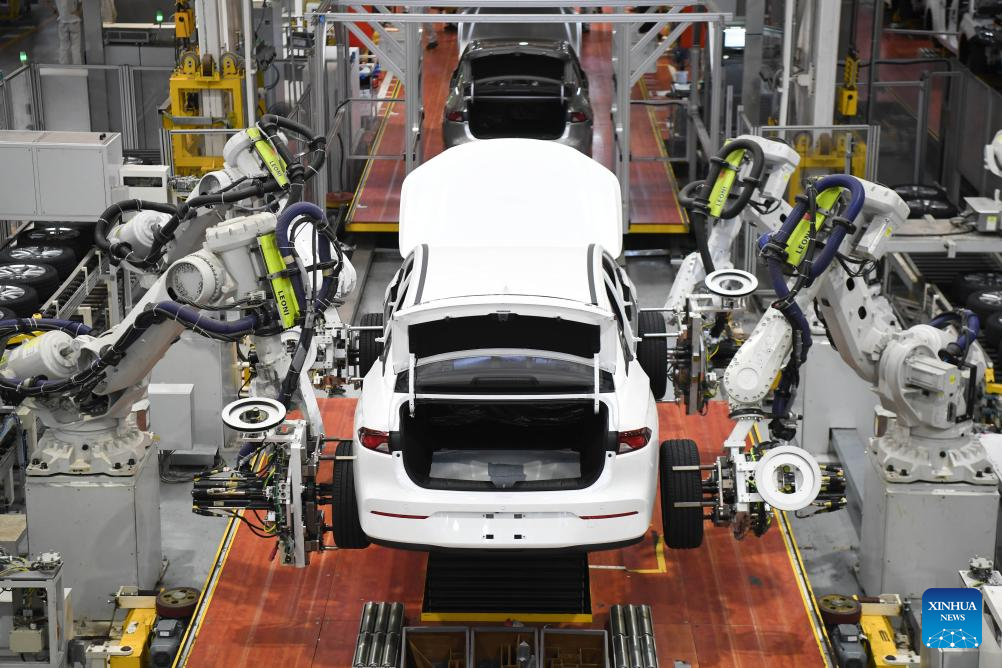
This photo taken on April 24, 2024 shows an automated tire installation station of GAC Aion New Energy Automobile Co., Ltd. in Guangzhou, south China's Guangdong Province. With a burgeoning demand for clean energy solutions to combat climate change, the global landscape indicates a pressing need for expanded production capabilities rather than an excess.
According to projections by the International Energy Agency, the demand for new energy vehicles is anticipated to skyrocket, reaching 45 million by 2030, 4.5 times that of 2022. (Xinhua/Deng Hua)
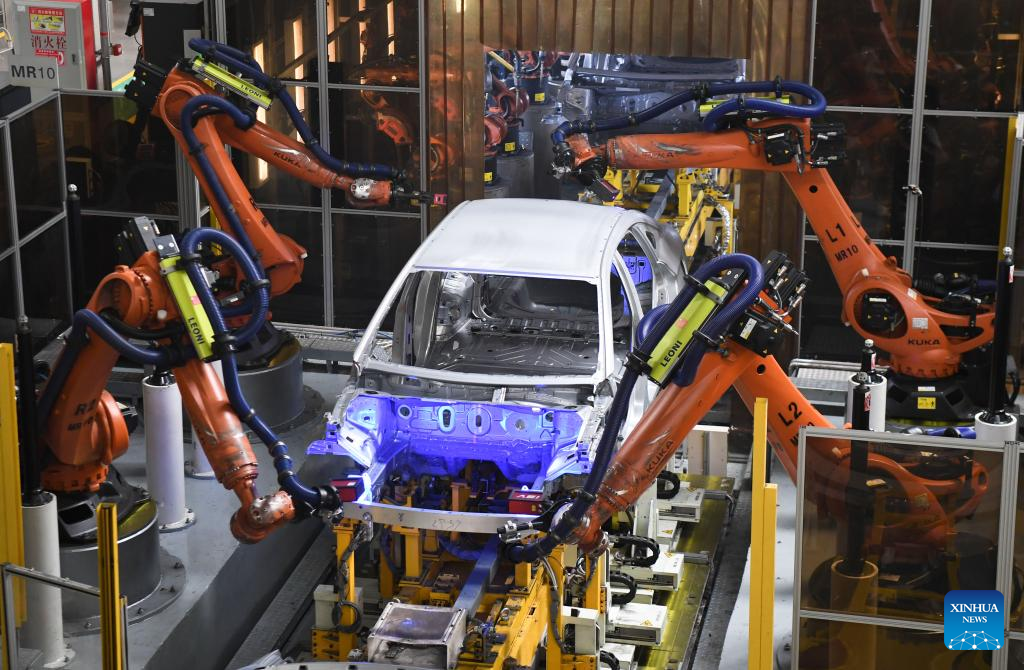
This photo taken on April 24, 2024 shows the welding workshop of GAC Aion New Energy Automobile Co., Ltd. in Guangzhou, south China's Guangdong Province. With a burgeoning demand for clean energy solutions to combat climate change, the global landscape indicates a pressing need for expanded production capabilities rather than an excess.
According to projections by the International Energy Agency, the demand for new energy vehicles is anticipated to skyrocket, reaching 45 million by 2030, 4.5 times that of 2022. (Xinhua/Deng Hua)

Visitors watch the demonstration of a battery swap station of Chinese brand NIO at the 2024 Beijing International Automotive Exhibition in Shunyi District, Beijing, capital of China, April 25, 2024. With a burgeoning demand for clean energy solutions to combat climate change, the global landscape indicates a pressing need for expanded production capabilities rather than an excess.
According to projections by the International Energy Agency, the demand for new energy vehicles is anticipated to skyrocket, reaching 45 million by 2030, 4.5 times that of 2022. (Xinhua/Ju Huanzong)

A worker checks the quality of a new energy vehicle (NEV) at the plant of BYD, China's leading NEV manufacturer, in Zhengzhou, central China's Henan Province, April 24, 2024. With a burgeoning demand for clean energy solutions to combat climate change, the global landscape indicates a pressing need for expanded production capabilities rather than an excess.
According to projections by the International Energy Agency, the demand for new energy vehicles is anticipated to skyrocket, reaching 45 million by 2030, 4.5 times that of 2022. (Xinhua/Li Jianan)
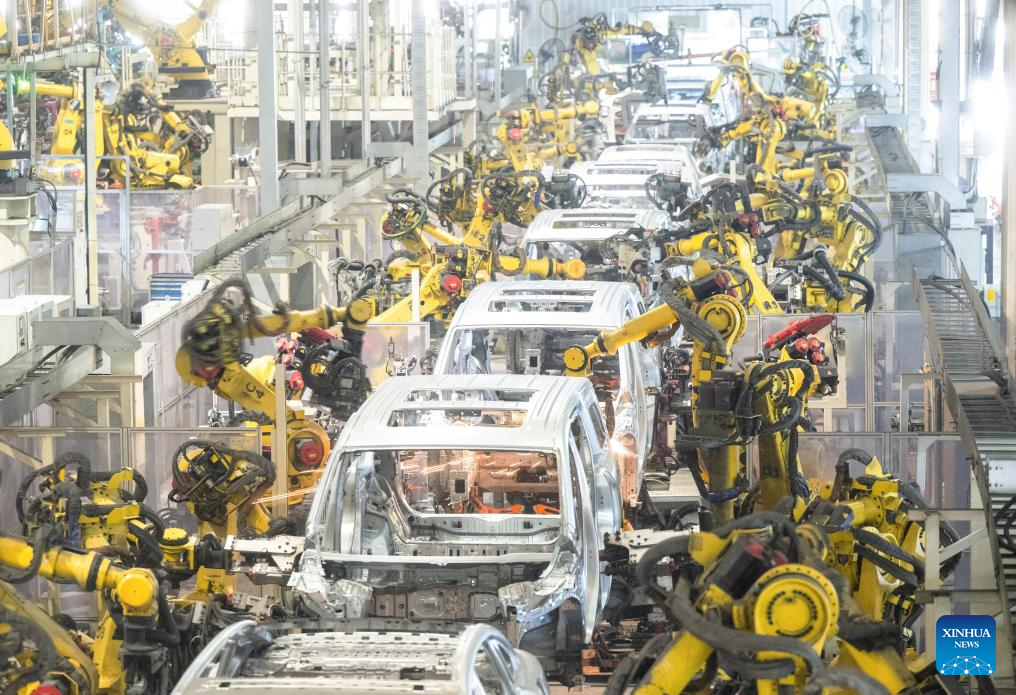
Robots work at a welding workshop of Voyah, a Chinese electric auto brand, in Wuhan, central China's Hubei Province, April 1, 2024. With a burgeoning demand for clean energy solutions to combat climate change, the global landscape indicates a pressing need for expanded production capabilities rather than an excess.
According to projections by the International Energy Agency, the demand for new energy vehicles is anticipated to skyrocket, reaching 45 million by 2030, 4.5 times that of 2022. (Xinhua/Xiao Yijiu)

A drone photo taken on April 25, 2024 shows robots working at the painting workshop of the Changde CRRC New Energy Vehicle Co., Ltd. in Changde, central China's Hunan Province. With a burgeoning demand for clean energy solutions to combat climate change, the global landscape indicates a pressing need for expanded production capabilities rather than an excess.
According to projections by the International Energy Agency, the demand for new energy vehicles is anticipated to skyrocket, reaching 45 million by 2030, 4.5 times that of 2022. (Xinhua/Chen Sihan)

A worker conducts static testing on a FAW-Hongqi EH7 new energy vehicle (NEV) at a plant of FAW-Hongqi in Changchun, northeast China's Jilin Province, April 24, 2024. With a burgeoning demand for clean energy solutions to combat climate change, the global landscape indicates a pressing need for expanded production capabilities rather than an excess.
According to projections by the International Energy Agency, the demand for new energy vehicles is anticipated to skyrocket, reaching 45 million by 2030, 4.5 times that of 2022. (Xinhua/Xu Chang)
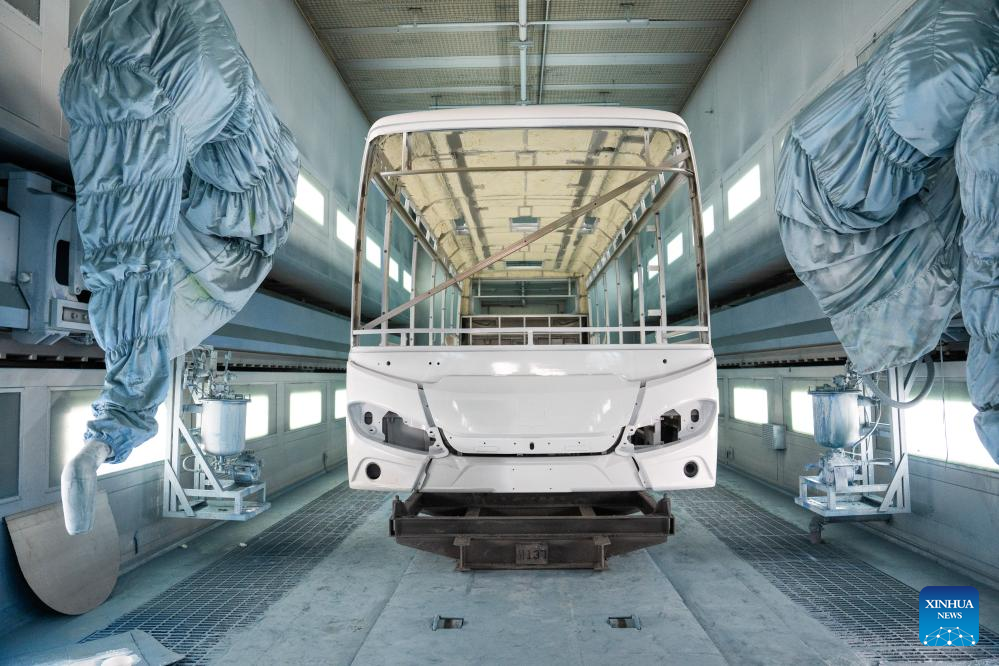
Robots work at the painting workshop of the Changde CRRC New Energy Vehicle Co., Ltd. in Changde, central China's Hunan Province, April 25, 2024. With a burgeoning demand for clean energy solutions to combat climate change, the global landscape indicates a pressing need for expanded production capabilities rather than an excess.
According to projections by the International Energy Agency, the demand for new energy vehicles is anticipated to skyrocket, reaching 45 million by 2030, 4.5 times that of 2022. (Xinhua/Chen Sihan)

Robots work at an assembly line of FAW-Hongqi in Changchun, northeast China's Jilin Province, April 24, 2024. With a burgeoning demand for clean energy solutions to combat climate change, the global landscape indicates a pressing need for expanded production capabilities rather than an excess.
According to projections by the International Energy Agency, the demand for new energy vehicles is anticipated to skyrocket, reaching 45 million by 2030, 4.5 times that of 2022. (Xinhua/Xu Chang)

This photo taken on April 24, 2024 shows an electric platform model of GAC Aion New Energy Automobile Co., Ltd. in Guangzhou, south China's Guangdong Province. With a burgeoning demand for clean energy solutions to combat climate change, the global landscape indicates a pressing need for expanded production capabilities rather than an excess.
According to projections by the International Energy Agency, the demand for new energy vehicles is anticipated to skyrocket, reaching 45 million by 2030, 4.5 times that of 2022. (Xinhua/Deng Hua)
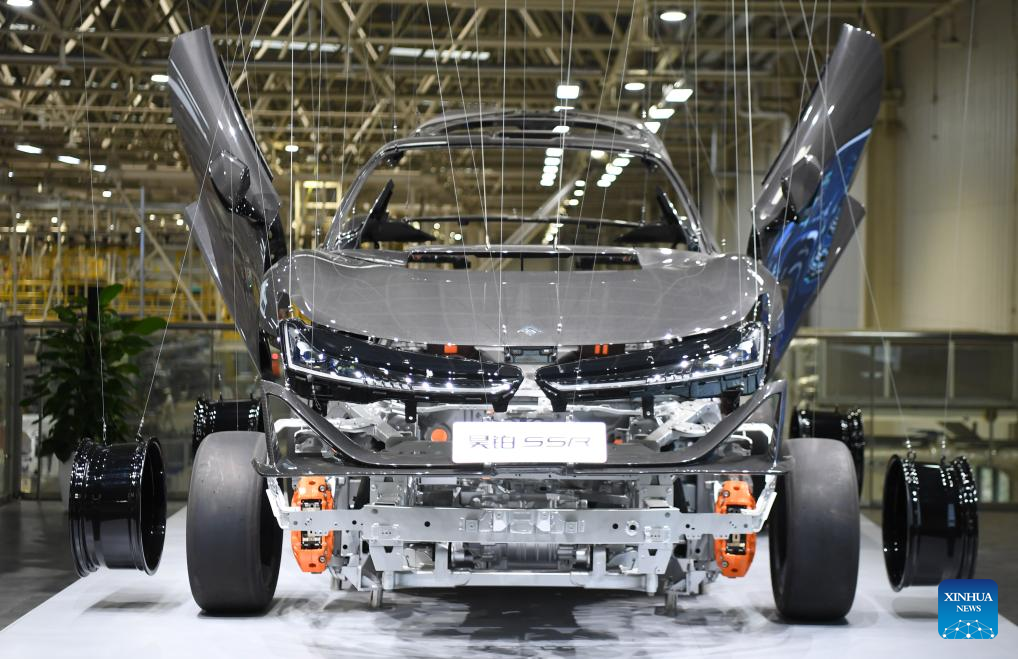
This photo taken on April 24, 2024 shows a vehicle art installation of the GAC Aion New Energy Automobile Co., Ltd. in Guangzhou, south China's Guangdong Province. With a burgeoning demand for clean energy solutions to combat climate change, the global landscape indicates a pressing need for expanded production capabilities rather than an excess.
According to projections by the International Energy Agency, the demand for new energy vehicles is anticipated to skyrocket, reaching 45 million by 2030, 4.5 times that of 2022. (Xinhua/Deng Hua)

Workers assemble hybrid vehicles at a plant of FAW-Hongqi in Changchun, northeast China's Jilin Province, April 24, 2024. With a burgeoning demand for clean energy solutions to combat climate change, the global landscape indicates a pressing need for expanded production capabilities rather than an excess.
According to projections by the International Energy Agency, the demand for new energy vehicles is anticipated to skyrocket, reaching 45 million by 2030, 4.5 times that of 2022. (Xinhua/Xu Chang)

This photo taken on April 25, 2024 shows a new energy vehicle (NEV) assembly line of BYD, China's leading NEV manufacturer, at a plant of BYD in Zhengzhou, central China's Henan Province. With a burgeoning demand for clean energy solutions to combat climate change, the global landscape indicates a pressing need for expanded production capabilities rather than an excess.
According to projections by the International Energy Agency, the demand for new energy vehicles is anticipated to skyrocket, reaching 45 million by 2030, 4.5 times that of 2022. (Xinhua/Li Jianan)
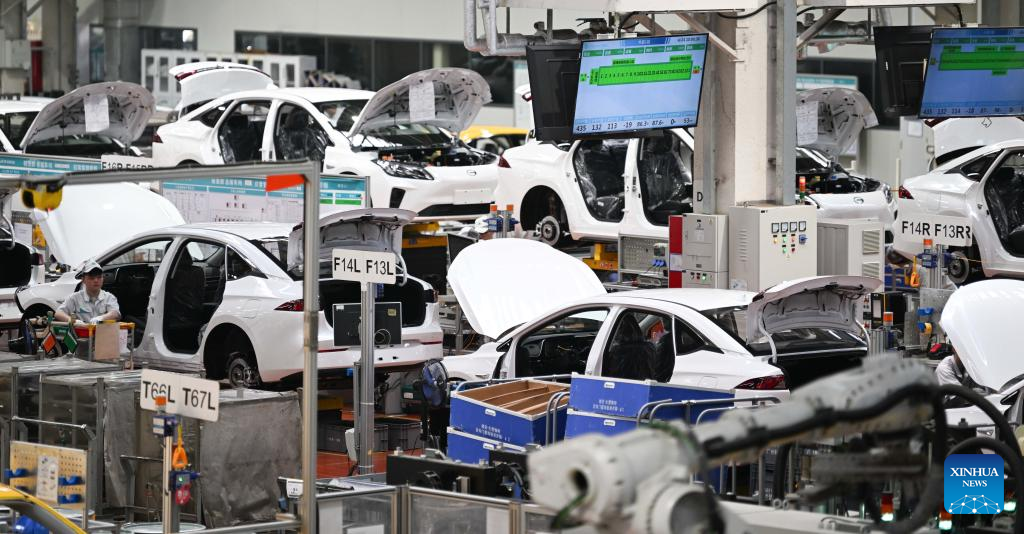
This photo taken on April 24, 2024 shows the assembly line of the GAC Aion New Energy Automobile Co., Ltd. in Guangzhou, south China's Guangdong Province. With a burgeoning demand for clean energy solutions to combat climate change, the global landscape indicates a pressing need for expanded production capabilities rather than an excess.
According to projections by the International Energy Agency, the demand for new energy vehicles is anticipated to skyrocket, reaching 45 million by 2030, 4.5 times that of 2022. (Xinhua/Deng Hua)

This photo taken on April 25, 2024 shows a new energy vehicle (NEV) produced by BYD, China's leading NEV manufacturer, at a plant of BYD in Zhengzhou, central China's Henan Province. With a burgeoning demand for clean energy solutions to combat climate change, the global landscape indicates a pressing need for expanded production capabilities rather than an excess.
According to projections by the International Energy Agency, the demand for new energy vehicles is anticipated to skyrocket, reaching 45 million by 2030, 4.5 times that of 2022. (Xinhua/Li Jianan)



